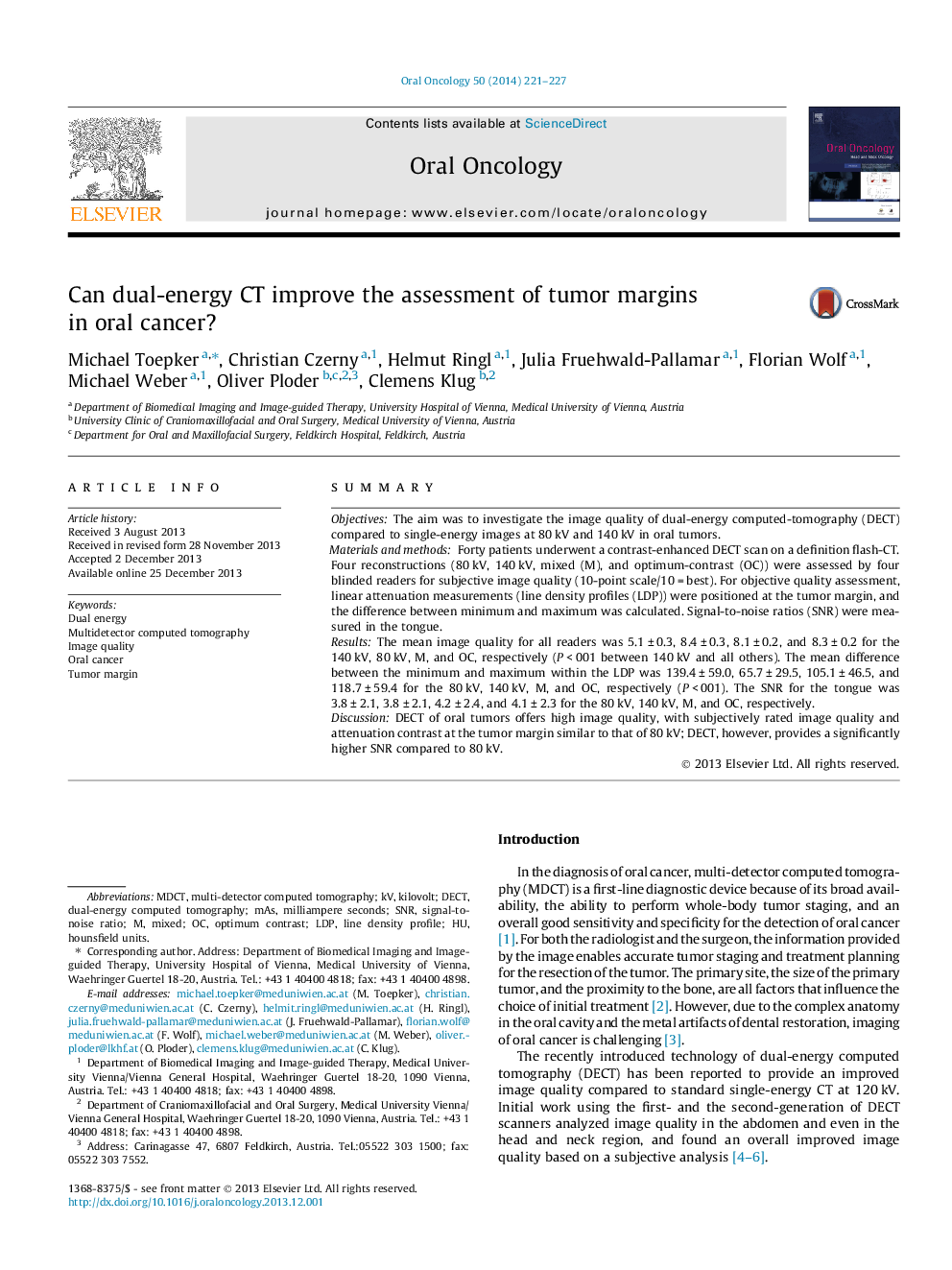| Article ID | Journal | Published Year | Pages | File Type |
|---|---|---|---|---|
| 3164313 | Oral Oncology | 2014 | 7 Pages |
SummaryObjectivesThe aim was to investigate the image quality of dual-energy computed-tomography (DECT) compared to single-energy images at 80 kV and 140 kV in oral tumors.Materials and methodsForty patients underwent a contrast-enhanced DECT scan on a definition flash-CT. Four reconstructions (80 kV, 140 kV, mixed (M), and optimum-contrast (OC)) were assessed by four blinded readers for subjective image quality (10-point scale/10 = best). For objective quality assessment, linear attenuation measurements (line density profiles (LDP)) were positioned at the tumor margin, and the difference between minimum and maximum was calculated. Signal-to-noise ratios (SNR) were measured in the tongue.ResultsThe mean image quality for all readers was 5.1 ± 0.3, 8.4 ± 0.3, 8.1 ± 0.2, and 8.3 ± 0.2 for the 140 kV, 80 kV, M, and OC, respectively (P < 001 between 140 kV and all others). The mean difference between the minimum and maximum within the LDP was 139.4 ± 59.0, 65.7 ± 29.5, 105.1 ± 46.5, and 118.7 ± 59.4 for the 80 kV, 140 kV, M, and OC, respectively (P < 001). The SNR for the tongue was 3.8 ± 2.1, 3.8 ± 2.1, 4.2 ± 2.4, and 4.1 ± 2.3 for the 80 kV, 140 kV, M, and OC, respectively.DiscussionDECT of oral tumors offers high image quality, with subjectively rated image quality and attenuation contrast at the tumor margin similar to that of 80 kV; DECT, however, provides a significantly higher SNR compared to 80 kV.
